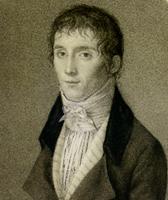
We can’t go without photos nowadays. Professionals use SLR cameras; amateurs are ok with their regular digital analogues. Even smart phones allow taking pictures of quite decent quality. Overall, people take about 1 trillion photos per year, which means that every few minutes there are more photos taken than during the whole 19th century when photography came into place.
 Development of the concept of photography was complicated and lasted not just for hundreds of years. During the 15th century our predecessors already started thinking about saving visual memories. The very first prototype of the photo camera was called “camera obscura”, or “dark chamber” if translated from Latin. It was a box dark inside and containing a small hole. The light coming from outside passed through the hole and produced an inverted image on its opposite side. Try this experiment yourself: take a certain box, make a small hole and place it outside during a bright sunny day. You are likely to receive an image similar to what our predecessors did! Although camera obscura did not produce anything that would remind us of a photo nowadays, it is considered to be the great-grandfather to modern photography.
Development of the concept of photography was complicated and lasted not just for hundreds of years. During the 15th century our predecessors already started thinking about saving visual memories. The very first prototype of the photo camera was called “camera obscura”, or “dark chamber” if translated from Latin. It was a box dark inside and containing a small hole. The light coming from outside passed through the hole and produced an inverted image on its opposite side. Try this experiment yourself: take a certain box, make a small hole and place it outside during a bright sunny day. You are likely to receive an image similar to what our predecessors did! Although camera obscura did not produce anything that would remind us of a photo nowadays, it is considered to be the great-grandfather to modern photography.
 The first more or less successful photographic image the history knows of is dated 1826. It was made by a Frenchman Joseph Nicephore Niepc. He used the concept of camera obscura and saved a street image on a metal plate covered with a thin layer of asphalt. The image was not too detailed, the exposure lasted 8 hours, but it was a breakthrough in photography development.
The first more or less successful photographic image the history knows of is dated 1826. It was made by a Frenchman Joseph Nicephore Niepc. He used the concept of camera obscura and saved a street image on a metal plate covered with a thin layer of asphalt. The image was not too detailed, the exposure lasted 8 hours, but it was a breakthrough in photography development.
The concept of a photo negative appeared about 10 years later and belongs to an Englishman William Talbort. He used the paper soaked in chloride silver. With the help of paper it became possible to multiply photographic images. Transparent negatives that Talbort developed were widely used till 1980s.
Photo cameras and photographic equipment meanwhile remained heavy and bulky and required several people to carry them and to protect them. The need for a portable camera was satisfied by Kodak company – “Kodak Brownie” became a popular film camera that existed till 1970. Overall, Kodak played a significant role in the development of photo cameras by bringing to the market several models that became affordable, reliable and were accompanied by possibility to develop the photos in one of the Kodak centers.
It’s not surprising that the author of the first in the world digital camera also worked for Kodak. A camera he developed in 1975 allowed taking black-and-white photos of 100x100 pixels. The photos were saved on a cassette used for tape recorders and could be viewed on the TV screen.
It’s sad, but Kodak - the company that invested so much in photography development bankrupted in 2012.
Nowadays photos are less treasured than during older times. Photo albums are no longer placed on the shelves in many homes; instead they go to social networks or don’t even go anywhere remaining in cameras or smart phones forever.
Don’t forget – every minute of life is unique and won’t come back. Take photos, save them, make extra copies of your digital photo albums or print photos. You will never regret doing it, but you may regret not to have saved your brightest memories.
This article is brought to you by fCoder Group, Inc.. We offer several software applications for processing your photos. Image Converter Plus will allow converting photos into a variety of formats, apply numerous effects on your images, resize them etc. 2JPEG will help you prioritize JPEG format as a resulting format for images. You can convert your photos to JPEG – the most widely used image format used for photographs. Besides, both applications can help to protect your images: place your company logo, your own avatar, or watermark your photos.
Photo by Anton Lefterov